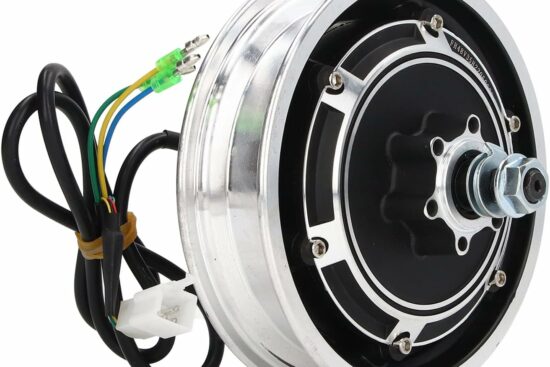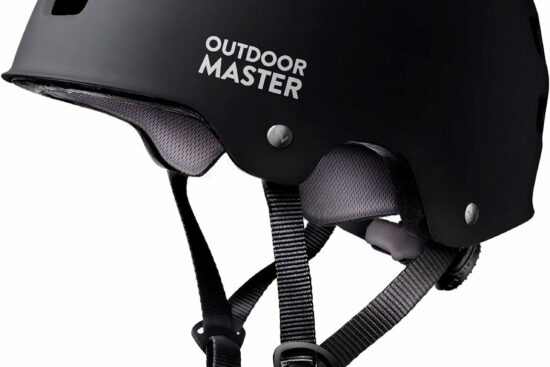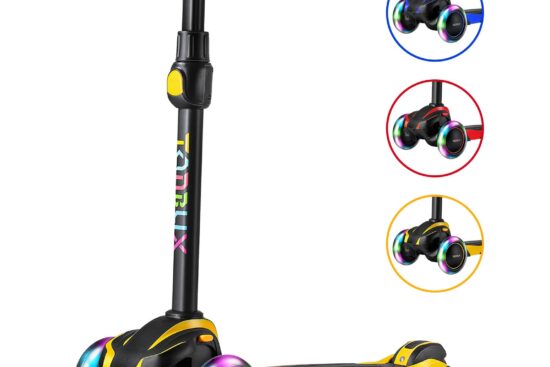
When it comes to making purchasing decisions for tech products, Amazon reviews can be a valuable resource. But what do you do when the product you’re interested in has undergone several updates since the reviews were written? It can be challenging to gauge the relevance of those old reviews, as the product may have improved or changed significantly. In our article, we’ll delve into this topic and provide you with some insights on how to navigate through this situation. You’ll learn about the factors to consider when evaluating the relevance of old Amazon reviews and how to make an informed decision based on the available information.
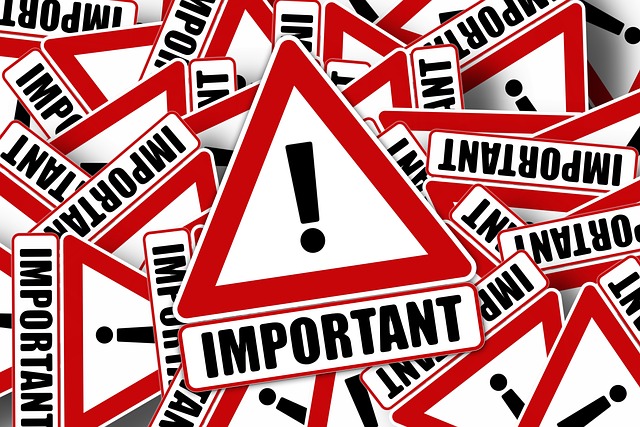
Identifying reliable reviews
When it comes to gauging the relevance of old Amazon reviews for a tech product that has undergone several updates, it’s essential to identify reliable reviews. By considering various factors, you can determine the trustworthiness and accuracy of the reviews before making a purchasing decision.
Understanding the source of the review
To gauge the reliability of an Amazon review, it’s crucial to consider the source. Take a moment to evaluate the profile of the reviewer. Look for indications of their expertise, such as their occupation or professional background, that may lend credibility to their opinion on the tech product. If the reviewer has a verified purchase badge, it adds an extra layer of legitimacy to their review.
Checking for verified purchases
One way to ensure the authenticity of a review is by checking if the reviewer has made a verified purchase. Verified purchase labels are displayed next to the reviewer’s name and indicate that they have actually bought the product from Amazon. These reviews are often more reliable because they come from real customers who have experienced the product firsthand. Keep an eye out for verified purchase badges to increase the chances of reading trustworthy reviews.
Considering the reviewer’s expertise
Assessing the expertise of the reviewer is another crucial step in identifying reliable Amazon reviews. While everyone’s opinion is valuable, those with expert knowledge in the specific tech product or related field are more likely to provide insightful and accurate reviews. Look for signs of expertise in the reviewer’s profile or their review itself, such as technical vocabulary or detailed analysis. Take their background into account when weighing the relevance of their review.
Distinguishing fake reviews
Unfortunately, in the realm of online reviews, there are also fake ones that can mislead consumers. It’s vital to be able to recognize these reviews and avoid falling into their trap. Here are some tips on distinguishing fake reviews from genuine ones.
Looking for suspicious patterns
One telltale sign of fake reviews is the presence of suspicious patterns. These may include a sudden influx of positive or negative reviews within a short period or multiple reviews that use similar language and phrases. Be wary of reviews that appear scripted or sound too generic. Genuine reviews tend to have a diversity of opinions and writing styles, reflecting the experiences of different users.
Evaluating the language and writing style
Pay close attention to the language and writing style used in the reviews. Genuine reviews typically have a natural flow, use proper grammar and punctuation, and provide specific details about the product. Fake reviews, on the other hand, may exhibit poor writing skills, contain excessive capitalization or misspellings, and lack specific information. If a review appears poorly written or overly enthusiastic without providing substance, it may be a red flag.
Checking for excessive positive or negative reviews
Fake reviews are often either excessively positive or overly negative. Genuine reviews tend to have a balanced perspective, highlighting both the strengths and weaknesses of the product. If a review appears to be too perfect or too damning without any constructive criticism, it’s worth being skeptical of its authenticity. Look for reviews that present a fair and thoughtful evaluation of the tech product.
Understanding the significance of star ratings
Star ratings are a common feature of Amazon reviews and can provide a useful overview of a product’s quality. However, it’s important to understand the significance of star ratings and how to interpret them accurately.
Considering the number of ratings
The number of ratings a product has received plays a crucial role in understanding the significance of its star ratings. Products with a higher number of ratings are typically more reliable indicators of quality compared to those with only a few ratings. A larger sample size provides a more representative reflection of the product’s overall performance. Consider the number of ratings alongside the average star rating when assessing the relevance of old Amazon reviews.
Analyzing the distribution of ratings
In addition to the overall average star rating, it’s essential to analyze the distribution of ratings. Look for patterns in how customers rate the product. If there is a wide range of ratings, from one star to five stars, it indicates that people have different opinions about the product. On the other hand, if the majority of ratings are consistently high or low, it may indicate skewed reviews. Understanding the distribution of ratings allows for a more nuanced evaluation of the tech product.
Weighing the overall average rating
While star ratings can be a helpful guide, it’s important not to solely rely on them. Consider the overall average rating in conjunction with individual reviews to get a comprehensive understanding of the tech product’s performance. A high average rating may indicate overall satisfaction, but it’s still crucial to read the reviews to see if the product meets your specific needs and preferences.
Finding the best tech products on Amazon
To find the best tech products on Amazon, it’s helpful to utilize search filters, read customer reviews with specific criteria, and explore curated lists and recommended products.
Using search filters and sorting options
When searching for tech products on Amazon, take advantage of the search filters and sorting options available. Refine your search by selecting specific categories, brands, or price ranges. Additionally, you can sort the search results based on relevance, price, or customer ratings. These filters and sorting options can help you narrow down your options and find the best tech products that suit your needs.
Reading customer reviews with specific criteria
To ensure you’re making an informed decision, read customer reviews with specific criteria in mind. If you have particular requirements for a tech product, such as battery life or audio quality, look for reviews that specifically mention these aspects. This way, you can gauge whether the product meets your specific needs based on the experiences of other customers. Pay close attention to reviews that address the features that matter most to you.
Exploring curated lists and recommended products
Amazon often features curated lists and recommended products that showcase the best tech products available. These lists are compiled by experts or based on customer preferences and reviews. Exploring these curated lists can be a convenient way to identify the top-performing tech products on Amazon. Consider these recommendations alongside individual reviews to make a well-informed decision.
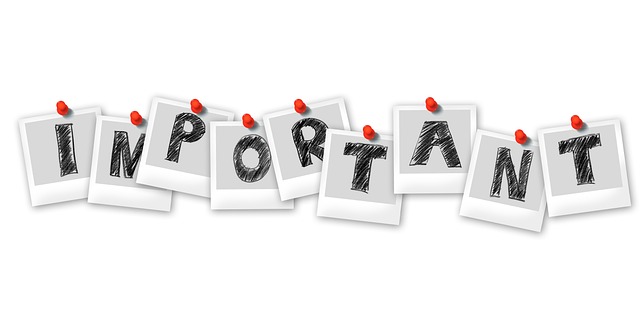
Navigating conflicting reviews
It’s common to come across conflicting reviews when evaluating tech products on Amazon. Some customers may express their satisfaction, while others may highlight concerns or negative experiences. When faced with conflicting reviews, it’s important to navigate through them in a methodical manner.
Identifying common themes and concerns
A useful technique for navigating conflicting reviews is to identify common themes and concerns. Look for recurring topics or issues that customers mention in their reviews. If multiple reviews mention similar positives or negatives, it’s likely that those aspects are significant factors to consider. Pay attention to common themes that arise consistently across different reviews.
Considering the reviewer’s perspective
When assessing conflicting reviews, consider the reviewer’s perspective. Keep in mind that individuals have different preferences, expectations, and requirements. A particular feature that may be considered a drawback by one reviewer may not be significant to you. Consider whether the reviewer’s perspective aligns with your own needs and preferences before dismissing a conflicting review. Understanding the context and perspective of the reviewer can help you weigh their opinion more accurately.
Seeking additional sources of information
To gain a more comprehensive understanding of a tech product, seek additional sources of information beyond Amazon reviews. Visit reputable tech review websites, forums, or online communities dedicated to discussing the specific product you’re interested in. These external sources can provide more insight and help you form a well-rounded opinion. By considering a range of perspectives, you can make a more informed decision.
Evaluating the credibility of reviewers
Evaluating the credibility of reviewers is an essential step in gauging the relevance of old Amazon reviews. By considering the reviewer’s history and activity, looking for detailed and unbiased reviews, and considering their product knowledge, you can assess the credibility of their opinions.
Checking the reviewer’s history and activity
To evaluate the credibility of a reviewer, check their history and activity on Amazon. Look for indications that they have been consistently active in providing reviews over time. Pay attention to the types of products they review and their engagement with the review community. Established and reputable reviewers are more likely to provide trustworthy and valuable insights.
Looking for detailed and unbiased reviews
Credible reviewers often provide detailed and unbiased reviews. They take the time to explain their experiences, highlight both the positives and negatives, and provide specific examples or evidence to support their claims. Look for reviews that provide objective assessments rather than purely subjective opinions. Credible reviewers strive to provide balanced and helpful information.
Considering the reviewer’s product knowledge
Another aspect to consider when evaluating the credibility of a reviewer is their product knowledge. Reviewers who demonstrate a deep understanding of the tech product, its features, and how it compares to similar products are more likely to provide informed opinions. Look for reviewers who can articulate their insights in a way that demonstrates expertise and product knowledge.

Impact of negative reviews on product reputation
Negative reviews can have a significant impact on a product’s reputation. However, it’s essential to assess the severity and frequency of negative reviews, consider the reasons behind negative experiences, and balance negative reviews with positive ones when evaluating a tech product.
Assessing the severity and frequency of negative reviews
When confronted with negative reviews, consider the severity and frequency of the issues mentioned. If a significant number of customers report severe problems or consistently highlight major shortcomings, it may be a cause for concern. Conversely, if negative reviews are sporadic and address minor issues that may not affect your requirements, they may be less impactful. Assess the magnitude and frequency of negative reviews to gauge their significance.
Considering the reasons behind negative experiences
Dig deeper into negative reviews to understand the reasons behind negative experiences. Some issues may be subjective or specific to individual users’ circumstances. Pay attention to whether negative reviews mention issues that align with your own needs and expectations. Separating genuine concerns from personal preferences can help you make a more accurate assessment of the tech product’s reputation.
Balancing negative reviews with positive ones
It’s important to balance negative reviews with positive ones when evaluating a tech product. Negative reviews can provide insight into potential drawbacks or issues, but positive reviews can highlight the product’s strengths and successes. Consider the overall sentiment of the reviews and weigh the opinions of different reviewers to get a comprehensive view of the product’s reputation. By considering a range of perspectives, you can make a more informed decision.
Reporting suspicious activities
If you come across suspicious activities or reviews that you believe are fraudulent or manipulative, it’s crucial to report them. By flagging questionable reviews to Amazon, reporting potential review manipulation, and providing relevant evidence and details, you can contribute to the integrity of the review system.
Flagging questionable reviews to Amazon
Amazon provides an option to flag reviews that you believe are questionable or violate their review guidelines. When you encounter a suspicious review, click on the “Report abuse” or similar link provided below the review. Select the appropriate reason for your report and provide any additional details or evidence that support your claim. By flagging questionable reviews, you help Amazon identify and investigate potential issues.
Reporting potential review manipulation
If you suspect that a product’s reviews are being manipulated by sellers or individuals with ulterior motives, report it to Amazon. Review manipulation includes practices such as incentivizing positive reviews or posting fake reviews to mislead customers. Use the appropriate channels on Amazon’s website to report these activities. Be prepared to provide specific information or evidence that supports your claim. Reporting potential review manipulation contributes to a fair and transparent review system.
Providing relevant evidence and details
When reporting suspicious activities or review manipulation, provide as much relevant evidence and details as possible. This can include screenshots of suspicious reviews or comments, information about suspicious patterns or behavior, or any other supporting documentation. The more accurate and detailed the information you provide, the better equipped Amazon will be to investigate and address the issue. Your active participation helps to uphold the integrity of the review system.
Participating in the review community responsibly
As a part of the review community on Amazon, it’s important to participate responsibly. By writing honest and balanced reviews, avoiding conflicts of interest, and following Amazon’s review guidelines, you contribute to the credibility and usefulness of the review system.
Writing honest and balanced reviews
When sharing your own experiences through reviews, prioritize honesty and balance. Provide a fair assessment of the product, highlighting both its strengths and weaknesses. Use specific examples or evidence to support your claims and provide relevant information that potential buyers would find helpful. Your honest and balanced reviews help other customers make informed decisions.
Avoiding conflicts of interest
To maintain the integrity of the review system, it’s crucial to avoid conflicts of interest. Do not provide reviews for products in which you have a personal or financial stake. This includes avoiding reviews for products from family members, friends, or those associated with your business. By keeping reviews impartial and unbiased, you help create a trustworthy environment for all customers.
Following Amazon’s review guidelines
When participating in the review community on Amazon, it’s essential to adhere to Amazon’s review guidelines. Familiarize yourself with these guidelines to ensure you’re following the rules and regulations set by the platform. Amazon’s guidelines outline what is permitted and what is not, helping maintain a fair and transparent review system. By following these guidelines, you contribute to the overall quality and usefulness of the reviews.
Conclusion
When gauging the relevance of old Amazon reviews for a tech product that has gone through several updates, it’s essential to consider various factors. By understanding the source of the review, checking for verified purchases, and considering the reviewer’s expertise, you can identify reliable reviews. Distinguishing fake reviews involves looking for suspicious patterns, evaluating the language and writing style, and checking for excessive positive or negative reviews. Understanding the significance of star ratings includes considering the number of ratings, analyzing the distribution of ratings, and weighing the overall average rating. Finding the best tech products on Amazon requires using search filters and sorting options, reading customer reviews with specific criteria, and exploring curated lists and recommended products. Navigating conflicting reviews involves identifying common themes and concerns, considering the reviewer’s perspective, and seeking additional sources of information. Evaluating the credibility of reviewers entails checking their history and activity, looking for detailed and unbiased reviews, and considering their product knowledge. The impact of negative reviews on product reputation can be assessed by assessing the severity and frequency of negative reviews, considering the reasons behind negative experiences, and balancing negative reviews with positive ones. Reporting suspicious activities involves flagging questionable reviews to Amazon, reporting potential review manipulation, and providing relevant evidence and details. Participating in the review community responsibly includes writing honest and balanced reviews, avoiding conflicts of interest, and following Amazon’s review guidelines. By considering various factors and utilizing multiple sources of information, you can make a comprehensive evaluation of old Amazon reviews for a tech product and make an informed purchasing decision.


















